 |
| A young morion from Pitok Blanco's work, "Moriones" |
In 1978, renowned Angono-born muralist Jose V. Blanco and his then six children held an unprecedented art exhibit at the National Museum in Manila—the first time in Philippine art history that a father put up an art show with all his children. Two years later, in the same year when the seventh and youngest Blanco offspring was born, the family opened the Blanco Family Museum in their hometown. The private museum houses about 400 artworks created over decades by the gifted hands of each member of the Blanco household.
In early October, after the months-long lockdown due to COVID-19, the museum re-opened its exhibit to the public. Angono shares border with my hometown. I pedaled about about ten kilometers from home to check (for the first time) the Blanco family's vast collection.
 |
| Photo of the Blancos working in their atelier |
Pitok Blanco and Family
Jose, the master and family patriarch known by his folk name “Pitok Bunggan”, was the sole family member who took up Fine Arts. He entered the University of Santo Tomas in 1951 when its faculty was brimming with eminent personalities in Philippine art: National Artists Victorio Edades, Vicente Manansala and Carlos Francisco (also from Angono, Pitok’s ninong and eventual mentor), Order of Lakandula awardee Galo Ocampo, Antonio Garcia Llamas and Diosdado Lorenzo among others. Pitok graduated in 1955 topping his batch, bagging the best graduation thesis award.
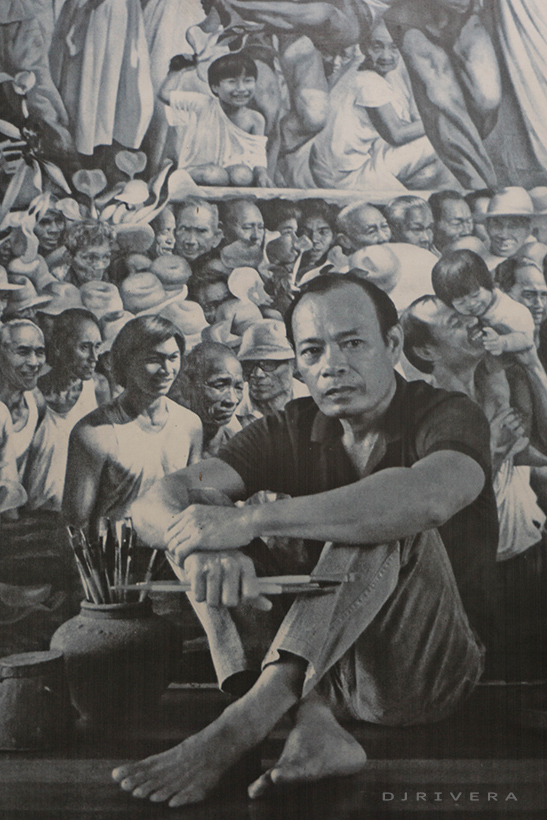 |
| Jose "Pitok" Blanco |
When Pitok married Loreto “Loring” Perez, also an Angono native whom he was blessed with five sons and two daughters, he was working as an advertising director. His passion for art, however, led Pitok to a difficult decision to resign from his nine-to-five job in 1971 and pursue a career in painting. With most of his time and energy directed to his art, he was able to put up his first one-man show at the Manila Hilton later that year. Alongside painting full-time, Pitok nurtured his children’s artistic talents and eventually his wife’s.
Through their growing years, the eldest child Glenn (b. 1962), Noel (b. 1964), Michael (b. 1966), the first daughter Joy (b. 1968), Jan (b. 1972), the second daughter Gay (b. 1974) and the youngest Peter Paul (b. 1980) were taught diligently by Pitok himself in a manner of how Fine Arts students are taught in the academy.
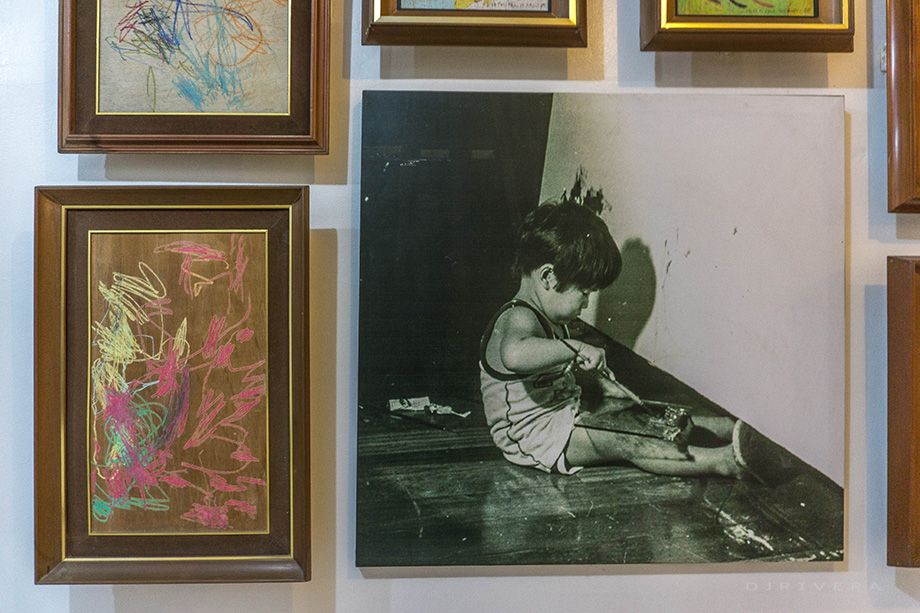 |
| A very young Peter Paul with his paintbrush |
Except for Glenn who started painting at age 16, the Blanco children first picked up the brush during their formative years. Gay, then the youngest, was only four when the family held the historic exhibit at the National Museum. Peter Paul was virtually born with the paintbrush in his hand as he started at a tender age of 11 months.
Though the children are all practicing visual artists since they were young, Pitok never forced his children to involve themselves in the arts. In fact, he encouraged them to pursue other field of studies that could give them a nice-paying job that would then support them in being an artist.
Living with painters and being surrounded by artworks that add up through the years, Loring soon followed as her husband’s art student. She started at age 48. Loring might not be an artist by blood but it was Pitok’s tutelage and her painter-children’s guidance that brought out the potential in her. After all, she was born in Angono soil which was proven fertile for artists.
An exhibit held in Sentosa, Singapore in 1990 was the first time that all nine of them contributed an artwork for the family’s art show.
 |
| Colored family photo displayed at the gallery |
Pitok’s decision to leave his day job to become a full-time artist was proven life-changing and fruitful by numerous recognitions that each of the Blancos had received over the years and by the art exhibitions that the family held in the country and other parts of the world.
Pitok died in August 14, 2008; he was 76. The seven children continued his legacy after Loring passed away not long after. Pitok is part of the long line of well-known Angono folk artists. Being a nominee for the Order of National Artists, he is poised to become the third from Angono following Carlos Francisco and Lucio San Pedro.
READ ALSO: Botong Francisco's House and The Second Gallery
Art is indeed in the blood of the Blancos. Pitok’s forefather was Pedro Piñon, a painter and sculptor of religious pieces in the 19th century, and an uncle on his mother’s side pursued painting after retiring from the US Navy.
Inside the Museum
Blanco Family Museum is within the walls of a sizeable property. The ground floor halls house the hundreds of family’s paintings while the upper floor holds the atelier that gave birth to those artworks.
 |
| July 1990 newspaper feature about Pitok Blanco |
Inside the halls, a framed collage of tawny newspaper clipping greets museum visitors—a July 1990 feature on Pitok Blanco’s magnum opus, the “Angono Fisherman’s Festival”—as well as a portrait of Pitok and Loring hung beside their Ulirang Ama and Ulirang Ina awards received in year 2000. Placing the Blanco couple’s portraits and citations for their exemplary parenthood before the long line of family’s art pieces symbolizes the couple’s no-ordinary parenting that raised a brood of talented artist.
READ ALSO: Nunelucio Alvarado and Sagay City's Vibrant Art Scene
The artwork display has nine sections, one for each of the Blanco artist. It begins with Peter Paul’s innocent doodles from his toddler years, the older siblings’ works follow until the eldest Glenn’s artworks, then Loring’s paintings and finally, Pitok’s murals.
 |
| Peter Paul's childhood artworks |
 |
| Gay Blanco's section |
 |
| Jan Blanco's artworks |
 |
| Joy Blanco's section |
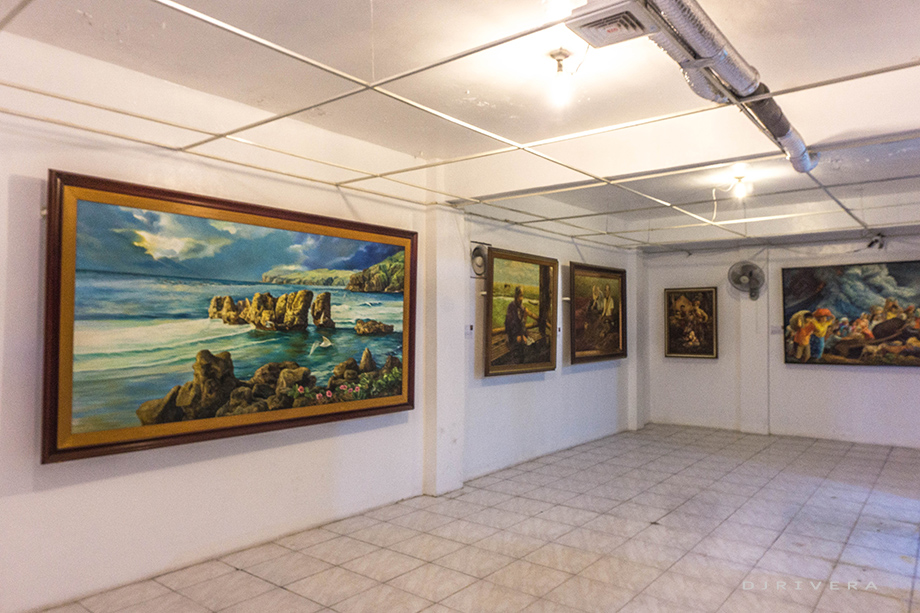 |
| Michael Blanco's artworks |
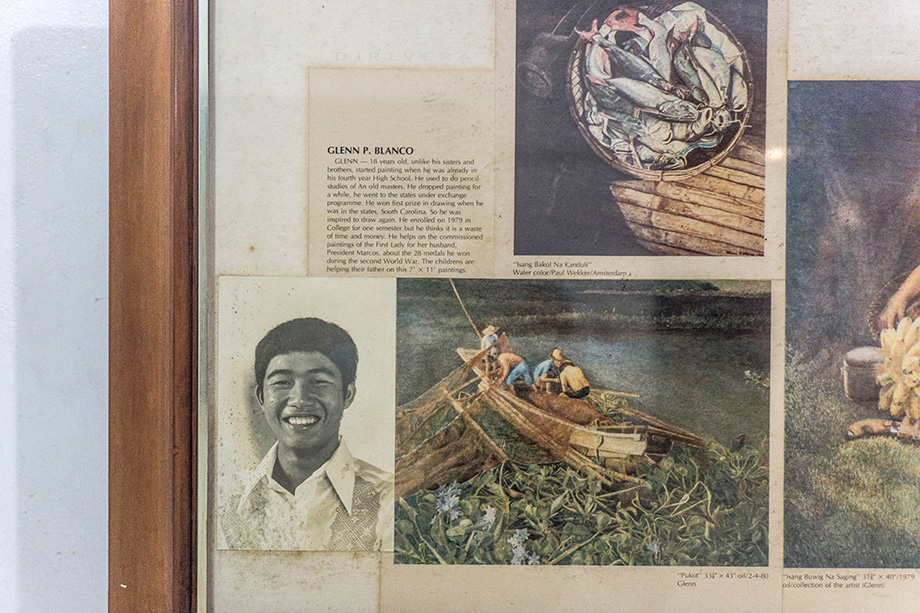 |
| Newspaper clipping featuring Glenn Blanco |
Blanco family’s style leans to realism and each member, as all artists do, has favorites or specialties. As described in the museum’s give-away leaflet: Gay’s beloved subjects are mother and child, Jan is best in doing details of feathered animals, Joy is good at evoking the cultural environment, Michael’s genre is characterized by figures of people engaged in lively interactions, Noel got good hands in presenting water in all its moods, Glenn has propensity in painting vibrant vegetations, and Loring’s paintings tell about human warmth that comes from a mother’s hands.
Pitok’s subjects include events from prehistory and colonial history, Filipino festivals, folk traditions, and contemporary life scenes, but he became known for his murals of Angono life. His masterpiece and perhaps the most awe-inspiring artwork inside the museum is the “Angono Fisherman’s Festival” that depicts Angono’s town fiesta. The large-scale canvass contains a crowd of more than a hundred human figures, all are faces of real people said to be Pitok’s neighbors in Angono. The mural took two years to complete, with Pitok visiting each house to sketch the town folks’ faces. Even himself and his children appear on the scene.
 |
| "Angono Fisherman's Festival" |
 |
| Pitok Blanco (center) in "Angono Fisherman's Festival" |
 |
| Pitok's section; "The Burning of Angono" and "Angono Fisherman's Festival" displayed opposite each other |
Most of Pitok’s works have festive moods but he didn't shy away from dark subjects such as “The Burning of Angono” that pictures his memory of World War II when the Japanese forces set his hometown ablaze.
Annexed to the familial exhibit halls is The Blanco Art Gallery that holds artworks of other local artists. These art pieces are available for purchase. Also at the ground floor, outside the halls, one will find the courtyard that is usually used to hold workshops and events, the museum garden, and a cafe by the garden.
 |
| The Blanco Art Gallery |
 |
| Some artworks for sale at The Blanco Art Gallery |
Michael Blanco, the third child, is the present curator of the family’s art museum.
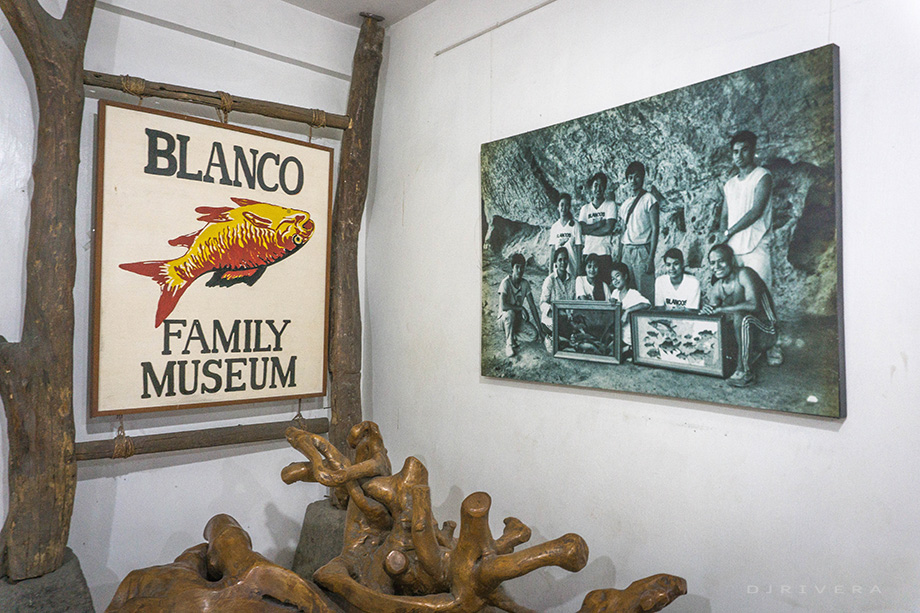 |
| Blanco Family's portrait at the entrance |
How to Get to Blanco Family Museum
Drive: https://waze.com/ul/hwdw4su620 (using Waze app)
Commute: Take Angono-bound jeepney or UV Express at the terminals in Mandaluyong (at SM Megamall, Robinsons Galleria, Starmall EDSA Shaw or Greenfield District) or at terminals near Marcos Highway in Pasig (at Sta. Lucia East Grandmall or Robinsons Metro East) then alight at munisipyo (Angono Municipal Hall). From there, take a tricycle to take you to the museum.
- Landline: (02) 8651-0048 / Mobile: (+63) 9063731300
- Blanco Family Museum (Facebook page)


